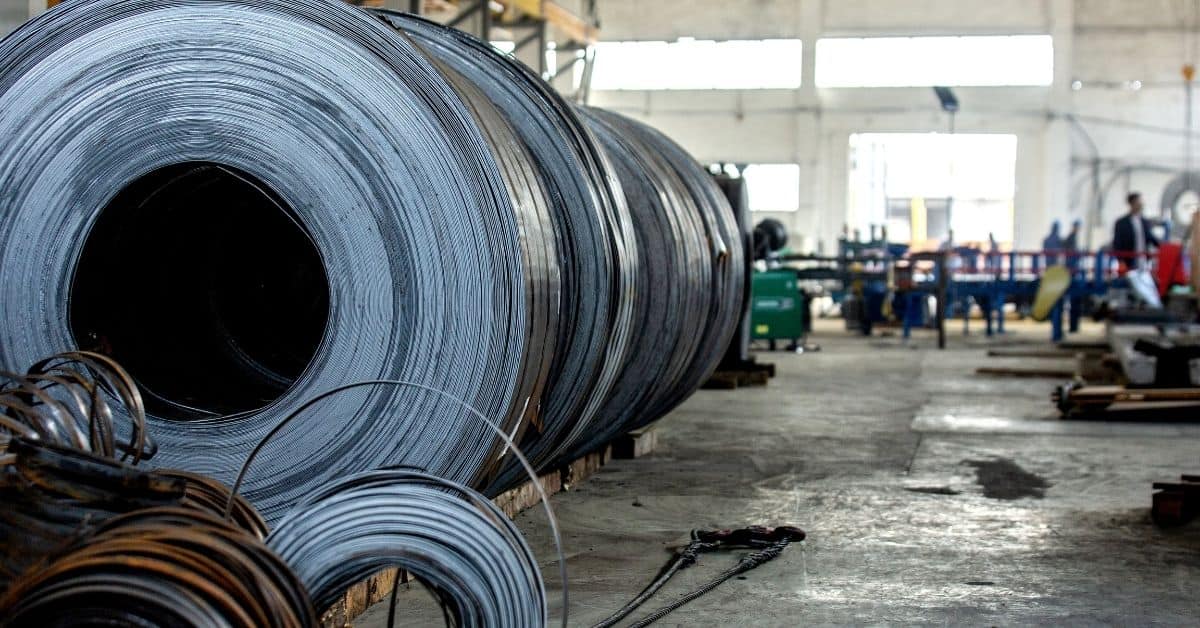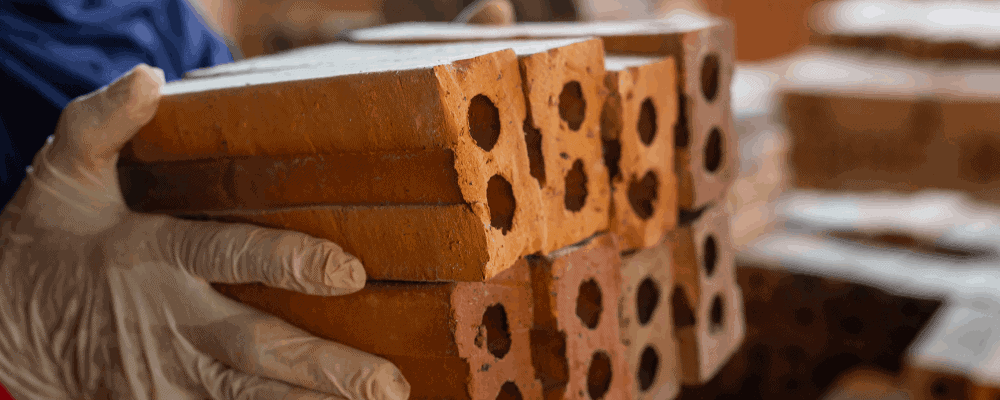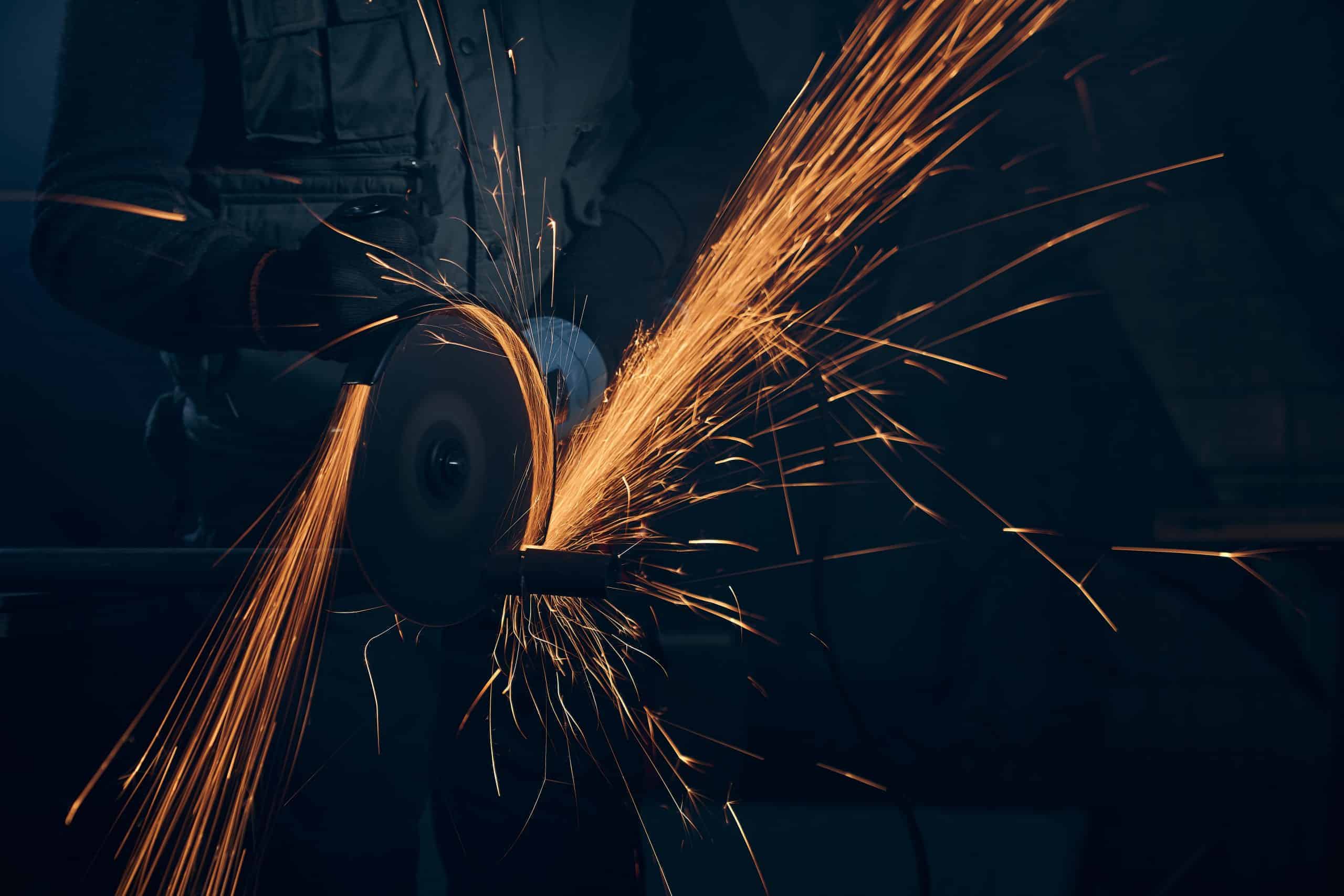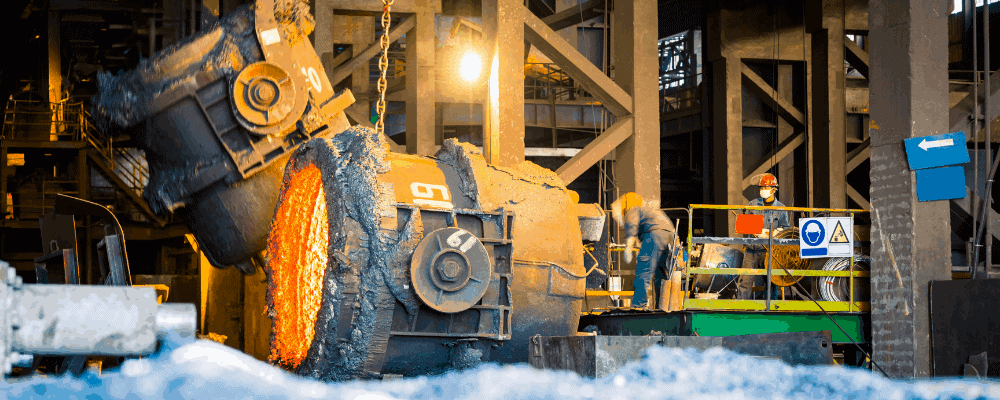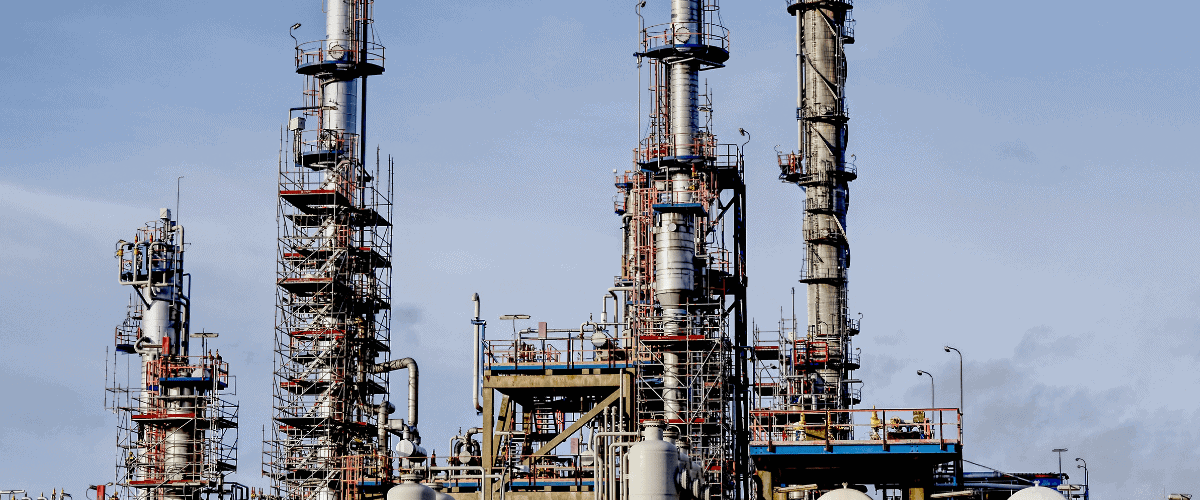Construction and building material sales positive news for the economy in challenging times, says SEIFSA
JOHANNESBURG, 15th JULY 2021 – The improvement in the sales of construction and building material is encouraging amid the challenging economic environment, the Steel and Engineering Industries Federation of Southern Africa (SEIFSA) said today.
Wholesale trade sales data released by Statistics South Africa (StatsSA) today showed an increase in sales of 31.3% in May 2021 compared to May 2020, to reach R158-billion in constant terms. Month on month, sales increased 6.3% from April. Year to date, wholesale trade sales have increased by 14.5%.
Sales of construction and building materials increased to R13-billion from R11-billion in April 2021, with expansionary year-on-year growth of 115.9% in May 2021.
Within the Metals and Engineering sector, the increase in the sale of construction and building material was driven mainly by the increase in the demand for building supplies across all segments including non-ferrous metal products, basic iron and steel products, as well as other fabricated metal products.
Commenting on the data, SEIFSA Chief Economist Chifipa Mhango said the figures are a sign that economic recovery in South Africa remains on track amid improved trading and industrial production activity. He said, however, that current unrest in the country threatens to halt this progress as it has disrupted supply chains across all sectors.
He said the Government needs to urgently mobilise all its resources to ensure stability in order to ensure that economic recovery is not derailed. “Our revised indications suggest that if the unrest continues further, production and sales of products within the M&E sector will be affected, as road freight transport, which is a core element of input supply, has been massively disrupted, thus negatively affecting the current positive trend in construction and building material sales,” he said.
Improvement In Manufacturing Production Data Encouraging, Says SEIFSA
JOHANNESBURG, 12 JULY 2021 – The continued improvement in manufacturing sector production and sales data is an indication of sporadic signs of economic recovery from the impact of COVID-19 lockdowns, the Steel and Engineering Industries Federation of Southern Africa (SEIFSA) said today.
According to manufacturing data released by Statistics South Africa (StatsSA), total manufacturing production improved to 35.3% year on year in May 2021, when compared to May 2020, despite a month-on-month decline of 2.6%. Total manufacturing sales increased by 53.3% year on year in May 2021 and while declining by 0.1% from April 2021. Year to date, manufacturing production has increased by 17%, with sales improving by 29%.
Within the Metals and Engineering (M&E) sub-sectors of the manufacturing sector, which accounts for 29% of total manufacturing production, total production across the 13 sub-categories increased by an average of 69.8% in May 2021 year on year, with total sales increasing by a significant 74.4% to reach R69.8-billion in May 2021, with the largest sales value being in household appliances at R135.1-billion.
SEIFSA Chief Economist Chifipa Mhango noted that while the improvement in manufacturing production was encouraging, the recent move to tighter lockdown regulations threatened to undo some of that improvement. “The move to level 4 adjusted of the national lockdown has been disruptive to overall economic activity and is also negatively affecting supply chains,” he said.
Mr Mhango said that the manufacturing sector is one of the backbones of the economy, however, its contribution to GDP has been declining since 1994. It is currently at 11, 9%, while the sector’s contribution to employment is also low, at 11,5%. He said the challenges that have eroded the manufacturing base continue to persist. These include declining demand levels, high electricity costs and increasing logistical costs among others.
“As SEIFSA, we continue to advocate for the speedy implementation of infrastructure investment into the South African economy, which has proved both locally and internationally to be a real catalyst for the revival of the manufacturing sector, especially within the M&E sector,” he said, adding that Government industrial incentives should be geared towards supporting the right industries while adopting an integrated policy approach to implementation.
Latest employment numbers reflect a turbulent path to economic recovery, says SEIFSA
JOHANNESBURG, 29th JUNE 2021 – The Quarterly Employment Statistics (QES) data released today by Statistics South Africa (StatsSA) reflect South Africa’s turbulent path to economic recovery amid the deepening negative impact of COVID-19 restrictions on the economy, the Steel and Engineering Industries Federation of Southern African (SEIFSA) said today.
According to StatsSA, total employment rate decreased by 0.1% quarter on quarter from 9 653 000 in the fourth quarter of 2020 to 9 644 000 in the first quarter of 2021. This was largely due to job cuts in industries such as trade, business services, construction and electricity. However, there were slight increases in employment in several sectors, including mining, with a 1.1% increase and manufacturing, with a 0.4% rise in jobs. Year on year, total employment decreased by 552 000, a 5.4% decline compared to the first quarter of 2020.
Within the Metals and Engineering (M&E) sector, total employment in the 13 sub-sectors increased by 2 031 jobs between the fourth quarter of 2020 and the first quarter of 2021, representing a 0.5% increase. This, according to SEFSA Chief Economist Chifipa Mhango, reflects marginally improved economic conditions that resulted in better production patterns as lockdown measures were relaxed.
Mr Mhango said, however, that employment trends in the M&E sector remain a concern as year on year, total employment in the M&E sector declined by 8%, from 429 617 in the first quarter of 2020 to 397 586 in the first quarter of 2021.
“The M&E sector continues to struggle to hold on to jobs, particularly in key demand-driving sectors such as construction,” he said, adding that this demonstrates a lack of business activity that is needed to stimulate demand for M&E products.
Mr Mhango noted that the contribution of the M&E industry to overall employment in the manufacturing sector remains significant, accounting for a share of 35.9% currently. “However, persistent challenges faced by M&E businesses such as high electricity costs as well as supply disruptions, rising logistics costs and rising imports need to be urgently addressed and should form part of the industrial recovery plan, if employment in the sector is to be stimulated. The recently launched Steel and Fabrication Master Plan should therefore be aligned to a short-term delivery deadline in order to ramp up economic activity that will create jobs,” he said.
Mr Mhango added that the Government should also focus on the speedy implementation of reforms across its State-owned entities, while also prioritising the implementation of economic revival plans that target increased infrastructure spending. This he said, will encourage private sector investment.
Mr Mhango said, however that he is hopeful of improved economic conditions over the medium term.
“We are beginning to see signs of improvement in overall business confidence levels, and from an M&E perspective, the Purchasing Managers’ Index being in expansionary territory, coupled with an increase in manufacturing output, is encouraging. We have high expectations that the South African economy will rebound in 2021 as economic activity gradually returns amid the COVID-19 vaccine roll-out programme,” he concluded.
Mining producer inflation driving overall PPI higher, says SEIFSA
JOHANNESBURG, 24 JUNE 2021 – The rise in producer price inflation (PPI) is concerning, given that it was driven mainly by mining – a key supplier of Metals and Engineering (M&E) industry raw material, the Steel and Engineering Industries Federation of Southern Africa (SEIFSA) said today.
Data released by Statistics SA showed that producer price inflation of final manufactured goods rose from a low level of 3.5% in January 2021 to a highest level of 7.4% in May. One of the biggest contributors to this increase was the mining sector, whose producer inflation shot up from 10.8% in April to 21.7% in May. Mining producer inflation has averaged 16% since January, putting pressure on the financial position of M&E producing companies with regards to cost of production.
SEIFSA Chief Economist Chifipa Mhango said other contributing factors to PPI were rising transport and energy costs. “As producer prices increase, this has implications towards the overall picture of consumer prices. Manufacturers take in costs of production such as electricity costs, transport costs, as well as mining products into their price-setting equation. Producers are passing on these costs to consumers, and this is evident in consumer price inflation numbers, which show that inflation rose from 4.4% in April to 5.2% in May,” he said.
Prices for intermediate manufactured goods increased from a low base of 8.6% in January to 15.2% in May. “Although this is positive news for the producers of intermediate goods in M&E sector in terms of potential revenue, in a depressed market this might negatively impact key consumer market affordability, resulting in lower sales volumes,” Mr Mhango said.
Mr Mhango noted that globally, producer price inflation will continue to pick up amid increased global economic activity as COVID-19 vaccines are rolled out in advanced economies. He said that the latest data shows that PPI in the eurozone is at 7.6%, while it is 9% and 6.6% in China and the US respectively. “This could be a concern on the global inflation outlook,” he said.
Sustained increase in sales of construction and building material is positive news for the metals industries, says SEIFSA
JOHANNESBURG, 17 JUNE 2021 – The continued uptick in sales of construction and building materials is positive news for the Metals and Engineering (M&E) industries as it signals growing demand for the sector’s products, the Steel and Engineering Industries Federation of Southern Africa (SEIFSA) said today.
Wholesale trade sales data released by Statistics South Africa (StatsSA) today showed a massive 85.5% increase in sales in April 2021 compared to April 2020, while month-on-month wholesale trade sales decreased by 0.1% in April 2021 compared to March 2021 due to the number of public holidays in the month.
Sales of construction and building materials declined slightly from R12.8-billion in March 2021 to R11-billion in April 2021, with expansionary year-on-year growth of 815.3% in April 2021. The increase was mainly driven by the increase in demand for building supplies across all segments such as basic steel and non-ferrous metal products, fabricated metal products as well as structural metal products, cement and bricks, among others, as construction activity picked amid the easing of COVID-19 alert level restrictions. Residential home improvements also contributed to the sales growth in construction material. The increase in M&E production sales, which has averaged R75-billion on a monthly basis in the last four months to April 2021 also supports the trend.
SEIFSA Chief Economist Chifipa Mhango said the positive data is an indication that economic recovery remains cautiously on track following the relaxation of lockdown measures put in place to curb the spread of COVID-19 from March last year. These restrictions limited trading and industrial activity for the better part of 2020.
“The latest data bodes well for the M&E industries as it signals an increased demand for its products as economic recovery in the country begins to gain momentum,” Mr Mhango said.
He, however, cautioned that the Government will need to speed up the COVID-19 vaccination rollout to ensure that more people are able to return to work thus further supporting economic activity. He called on the Government to help further drive demand for the sector’s products be ensuring that State-owned entities comply with local content requirements in Government infrastructure projects in line with the recently launched Steel and Fabrication Master Plan.
SEIFSA welcomes the launch of the Steel Master Plan
JOHANNESBURG, 11 JUNE 2021 – The Steel and Engineering Industries Federation of Southern Africa (SEIFSA) welcomes the launch of the Steel Master Plan (SMP) which sets the foundation for the development and growth of the Metals and Engineering (M&E) sector.
The SMP focuses on short-to-medium term interventions that build on the ongoing measures being implemented to ensure the longer term growth, protection and survival of the primary and secondary steel industries and comes at a time when the challenges facing the steel industry require urgent intervention, particularly now when the COVID-19 pandemic has aggravated the strain caused by these challenges.
Mr Lucio Trentini, SEIFSA Operations Director affirmed that “the challenges along the way will be complex, but this is the time for all stakeholders, including Government, Business and Labour to come together in agreeing on measures to preserve South Africa’s stee producing capacity, whilst protecting downstream users.”
He emphasised that “whilst SEIFSA stands ready to take the lead and play its part, there will be no easy or quick fix.” He stressed that “the industry has to work together and balance downstream and upstream needs.”
Mr Trentini indicated all stakeholders are unanimous in the belief that the country needs a primary steel industry. With rampant unemployment, poverty and inequality, it is vital that plans to reindustrialise the sector inclusive of the primary steel and downstream industries employing in excess of 200 000 employees do not fail. The M&E Sector is a strategic industry for South Africa. The National Development Plan is largely dependent on steel and South Africa needs steel – thus the viability, sustainability and competitiveness of the sector is in all our interests.
For Trentini, allowing local companies across the value chain and communities that depend on steel to suffer closure is unthinkable. He stressed historical trends in the M&E Sector show that “if some parts of our local industry close, there will be no way to revive them. It is therefore vital to support efforts to revive them.”
The SMP, the biggest and most ambitious intervention in the sector to date, offers an opportunity for all stakeholders to play their part in designing and implementing well positioned policy interventions focusing on how to grow demand. The SMP recognises the need for trade and support measures for the upstream and
downstream industries necessary to help the M&E Sector to survive in the short, mid and long term.
Mr Trentini stressed that for the SMP to meet its objectives, it must be supported and driven by industry, working collaboratively with leaders from organised labour, business and senior government officials. In the final analysis, the success of the SMP will therefore rest with the industry. SEIFSA, which represents a wide range of firms both big and small in the M&E Sector with a collective employee headcount in excess of 168 000, is ideally positioned to take the lead in representing the views of business across the industry, upstream and downstream.
Media Queries
Chifipa Mhango
Chief Economist
Tel: (011) 298 9411 / 083 450 9467
Email: Chifipa@seifsa.co.za
Web: www.seifsa.co.za
Mpho Lukoto
Communications Manager
Tel: (011) 298 9411 / 082 602 1725
Email: mpho@seifsa.co.za
Web: www.seifsa.co.za
Manufacturing production data an encouraging sign of beginnings of economic recovery in SA, says SEIFSA
JOHANNESBURG, 10 JUNE 2021 – The year-on-year improvement in April production and sales data is encouraging and bodes well for overall economic recovery in South Africa, the Steel and Engineering Federation of Southern Africa (SEIFSA) said today.
According to manufacturing data released by Statistics South Africa (StatsSA) today, total manufacturing production improved to 87.9% year on year in April despite a 1.2% monthly decline that is attributable to the public holidays during the month that disrupted activity
Total manufacturing sales increased by 116.2% year on year in April, but declining by 2.8% from March. Year to date, production increased by 13%, with sales improving by 23.6%. The largest contributors were; basic iron & steel, non-ferrous metal products, metal productions & machinery, motor vehicles, parts & accessories and other transport equipment. The high figures recorded for April 2021 compared to April 2020 are an indication of a return to a degree of economic normalcy following the national lockdown that halted industrial activity.
Within the M&E sub-sectors of the manufacturing sector, which account for 29% of total manufacturing production, total production across the 13 sub-categories increased by an average of 985.1% in April year on year, with total sales increasing by a significant 511.3% to R75.8 billion in April 2021. The largest sales value was in the non-ferrous metal products at R17.2 billion. April sales in the M&E sector were 15% lower than March 2021 sales due to the high number of holidays in the month.
SEIFSA Chief Economist Chifipa Mhango said although April’s output data indicates that economic recovery is firmly on track, the current bouts of load-shedding and high electricity costs will regrettably place significant strain on production. “The current environment is not conducive to meaningful recovery in our sector; however, we hope that the Government will support the growth momentum being seen in the manufacturing sector by focusing on policy implementation and the rollout of key infrastructure projects that will stimulate demand for M&E sector products,” Mr Mhango said, adding that the signing of the Steel Master Plan, which is scheduled for 11 June, is a step in the right direction to revive the M&E Sector.
SEIFSA welcomes encouraging first-quarter economic growth
JOHANNESBURG, 8 JUNE 2021 – The uptick in economic growth during the first quarter of 2021 in South Africa is encouraging as it indicates increased demand for local goods and services – a key driver for much-needed job creation, the Steel and Engineering Industries Federation of Southern Africa (SEIFSA) said today.
According to Statistics South Africa, real gross domestic product (GDP) increased at an annualised rate of 4.6% in the first quarter, though this was lower than the fourth quarter of 2020’s revised growth of 5.8%. The biggest contributors to this growth were the finance industry with 7.4% growth, the mining industry with 18.1%, and trade industries with 6.2%.
“The rise in GDP is a welcome development, particularly given the current strained economic environment, which is marked by rising unemployment levels, rising input costs, increasing energy costs and the COVID-19 pandemic,” said SEIFSA Chief Economist Chifipa Mhango, who added that the signs of economic recovery have been evident, with increasing production levels in key sectors such as the manufacturing and mining sectors, as well as the purchasing managers’ index numbers being in expansionary territory recently.
Mr Mhango said it was particularly encouraging that the broader manufacturing sector, including the Metals and Engineering (M&E) cluster of industries, was among the positive contributors in the secondary sector, rising by 1,6% in the first quarter. Manufacturing growth was largely driven by the automotive sector, as well as by manufacturers in wood, paper and publishing.
“Five of the 10 manufacturing sub-sectors reported positive growth rates, which bodes well for South Africa given that the sector is seen as key to South Africa’s growth and development due to its multiplier effect into other sectors of the economy,” Mr Mhango said.
He said the recovery in manufacturing has been evident as since the easing of the COVID-19 lockdown restrictions implemented in March 2020, with sales of building and construction material picking up from a low base of R1.2 billion in April 2020 to a moving monthly average of R11 billion to March 2021. He said a similar pattern is also reflected in recent M&E production sales improvement from a low base of R62 billion in January to R79.3 billion in March, thus supporting the GDP numbers.
Mr Mhango noted, however, that the decline in Gross Fixed Capital Formation (GFCF) data released along-side the GDP figures is not supportive of the positive GDP and production figures, as GFCF decreased by 2,6 % in the first quarter of 2021 from a high 12,1 % in the fourth quarter of 2021. He said this decline in GFCF was driven by a decrease in residential buildings, transport equipment and machinery & other equipment, demonstrating that the construction sector remains constrained.
Mr Mhango said SEIFSA was also disappointed by the first-quarter decline in net exports of 0,9 % amid a 26,5% rise in imports in the same period. The decline in exports of goods and services was largely influenced by decreased trade in minerals and vehicles and other transport equipment, while the rise in imports was largely driven by an increase in mineral products, machinery & equipment, vehicles and transport equipment.
“Given the strained local environment, we urge the Government to address the challenges faced by the M&E industry that continue to hamper its global competitiveness. The speedy implementation of the Steel Master Plan provides an opportunity for Government and business to work together to support export growth,” Mr Mhango said.
Unemployment numbers reflect a depressed overall economic environment under COVID-19 restrictions, says SEIFSA
JOHANNESBURG, 1 JUNE 2021 - The Quarterly Labour Force Survey (QLFS) data released today by Statistics South Africa (Stats SA) indicating unemployment level of 32.6%, reflects the deep depressed impact of COVID-19 lockdown on South African employment and the overall economic environment across major economic sectors, the Steel and Engineering Industries Federation of Southern African (SEIFSA) said today.
According to StatsSA, South Africa's unemployment rate rose to 32.6% in the first quarter of 2021 from 32.5% in the previous quarter. It is the highest jobless rate in the 13 years and comes amid the ongoing pandemic lockdown, which has contributed to the depressed economic environment, resulting in low investment activity. The level of unemployment in South Africa is far above other economies such as Brazil (14.7%), China (5.3%), India (6.5%) and Russia (5.2%); which are in an economic development partnership.
Construction recorded the biggest employment decline with 87 000 jobs lost, followed by trade (84 000) and private households (70 000).
SEIFSA Chief Economist Chifipa Mhango said number of jobs in key demand-driving sectors of the Metals and Engineering sector such as construction is worrying. He said the Government and the private sector need to work together to stimulate the economy and create jobs. “Investment-driven economic recovery is key and the Government needs to promote investor confidence by speedily implementing its economic revival plans, including the R791.2 billion of public sector infrastructure development over the next three fiscal years,” Mr Mhango said.
He said the contribution of the M&E sector remains key to job creation, yet it shed 35 000 last year alone. Persistent challenges faced by businesses in the M&E sector such as high electricity costs, unreliable energy supply as well as disruptions in raw material supply, rising logistics costs and imports have continued to weigh negatively on the industry, thus affecting job creation in manufacturing as a whole. “It is, therefore, important that the Government and the sector continue to engage with each other on how to address these challenges,” Mr Mhango said, adding that it is such partnerships that will also ensure that other interventions such as the Steel Master Plan are quickly finalised and implemented.
Overall producer prices continue to rise indicating cost pressures at industrial production level, says SEIFSA
JOHANNESBURG, 27 MAY 2021 – The rise in producer price inflation (PPI) is indicative of the cost pressures manufacturers are currently facing as a result of rising input costs, the Steel and Engineering Industries Federation of Southern Africa (SEIFSA) said today.
According to Statistics South Africa (StatsSA) data released today, PPI rose from a low level of 3.5% in January, reaching 6.7% in April for final manufactured goods. SEIFSA Chief Economist Chifipa Mhango said contributing factors to this increase include rising transport and energy costs as well as mining products which, from an industrial perspective, might not be financially sustainable in the long term.
“The PPI data shows that manufacturers are passing these costs on to consumers, which is also why we see a rise in consumer price inflation, which rose to 4.4% in April,” he said.
Prices for intermediate manufactured goods also increased from a low base of 8.6% in January, reaching 11.4% in April. Mr Mhango said although this is positive news for producers of intermediate goods in the Metals and Engineering (M&E) sector in terms of potential revenue generation, in a depressed market this might negatively impact key consumer market affordability, resulting in lower sales volumes.
Mr Mhango said SEIFSA was, however, encouraged by the declining PPI for the mining sector. According to StatsSA, PPI in that sector fell from a high level of 22.9% in January 2021, reaching 10.8% in April. In 2020 alone, mining PPI averaged 32.5%, which was the highest since 2017, putting pressure on the financial position of M&E producing companies.
Mr Mhango noted that the uptick in PPI would continue. “As the global economy slowly starts to pick up amid more relaxed COVID-19 lockdown restrictions, with confidence building due to the roll-out of vaccines across the world, global PPI will pick up, along with oil prices and mining producer prices,” he concluded.


